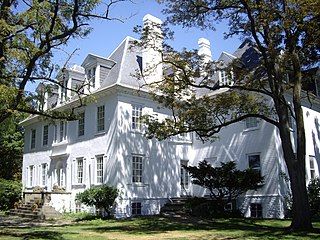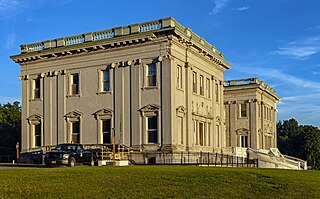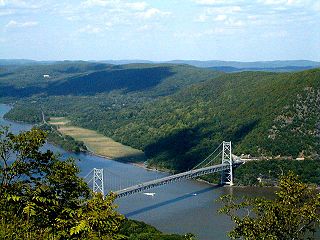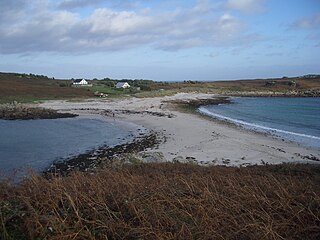
Ogden Livingston Mills was an American lawyer, businessman and politician. He served as United States Secretary of the Treasury in President Herbert Hoover's cabinet, during which time Mills pushed for tax increases, spending cuts and other austerity measures that would deepen the economic crisis. A member of the Republican Party, Mills also represented New York in the United States House of Representatives, served as Undersecretary of the Treasury during the administration of President Calvin Coolidge, and was the Republican nominee in the 1926 New York gubernatorial election.

Ogden Mills was an American financier and Thoroughbred racehorse owner.

The Clermont State Historic Site, also known as the Clermont estate, the Clermont Manor or just Clermont, is a New York State Historic Site in southwestern Columbia County, New York, United States. It protects the former estate of the Livingston family, seven generations of whom lived on the site over more than two centuries.

Esopus Meadows Lighthouse, nicknamed "Maid of the Meadows" and often simply referred to as the Esopus Light or Middle Hudson River Light is an active lighthouse on the Hudson River near Esopus, New York. The lighthouse stands on the west side of the channel, in the river, its granite foundation built atop piles that have been driven into the riverbed, and is accessible only by boat.

The Staatsburgh State Historic Site preserves a Beaux-Arts mansion designed by McKim, Mead, and White and the home's surrounding landscape in the hamlet of Staatsburg, Dutchess County, New York, United States. The historic site is located within Ogden Mills & Ruth Livingston Mills State Park. The mansion, a New York State Historic Site, is considered a fine example of the great estates built during the Gilded Age.
West Park is a hamlet on the west side of the Hudson River in the Town of Esopus, Ulster County, New York, United States. During the nineteenth and early twentieth centuries, the area became attractive to the well-to-do seeking second homes because it provided privacy, clean water and relatively inexpensive property.

The Livingston family of New York is a prominent family that migrated from Scotland to the Dutch Republic, and then to the Province of New York in the 17th century. Descended from the 4th Lord Livingston, its members included signers of the United States Declaration of Independence and the United States Constitution. Several members were Lords of Livingston Manor and Clermont Manor, located along the Hudson River in 18th-century eastern New York.

Ogden Mills & Ruth Livingston Mills State Park, also known as Mills Memorial State Park, is a 750-acre (3.0 km2) state park located in Staatsburg in Dutchess County, New York. It is off U.S. Route 9, between Rhinebeck to the north and Hyde Park to the south, at an elevation of 39 feet (12 m) above sea level. The park is bounded by the Hudson River on the west.

Dinsmore Golf Course, located in Staatsburg, New York, is listed as the third-oldest golf course in the United States, according to the New York State Office of Parks, Recreation and Historic Preservation. It was originally created by Hal Purdy in the 1890s as a private, nine-hole course, and was expanded to a full 18 holes in 1962.

Saugerties is a town in Ulster County, New York, United States. The population was 19,482 at the 2010 census. The Town of Saugerties contains the Village of Saugerties in the northeast corner of Ulster County. Part of the town is inside Catskill Park.
Maturin Livingston, a member of the prominent Livingston family, was an American lawyer and politician from New York.
Esopus is a village located in the town of Esopus, in Ulster County, New York. It is located south of Ulster Park on route 9W. Esopus is within the Kingston metro area. The name Esopus comes from the name of the Native American tribe who lived in the area.

Franny Reese State Park is a 251-acre (1.02 km2) state park located in the Town of Lloyd in Ulster County, New York. The park is managed by Scenic Hudson and is part of the Palisades Interstate Park system.
Elizabeth Livingston Cavendish-Bentinck, was an American born member of the Livingston family who married a British Member of Parliament from the Cavendish-Bentinck family and was a prominent member of New York Society during the Gilded Age.
Maturin Livingston Jr., an American merchant who was a member of the prominent Livingston family.
Morgan Lewis Livingston, was an American heir and member of the prominent Livingston family from New York.





















